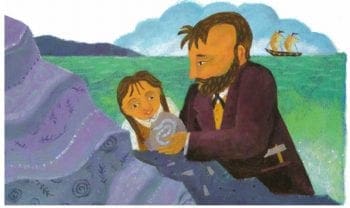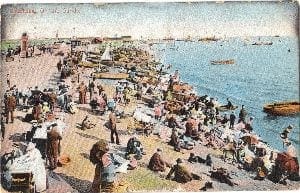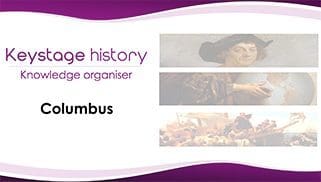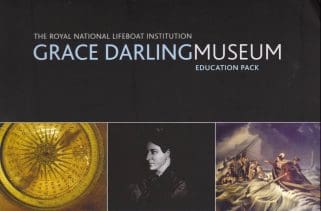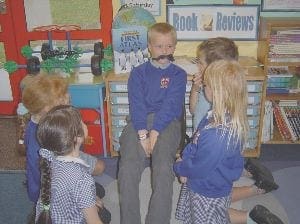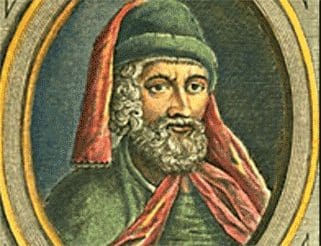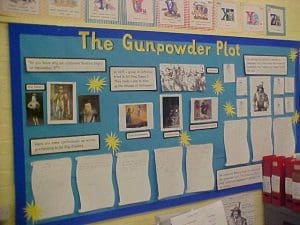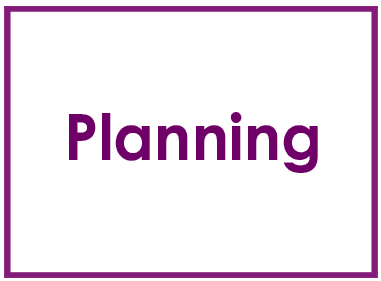
Superficially, Key Stage 1 seems the least complex history curriculum to plan because the burden of content to be covered seems manageable. Scratch beneath the short section that describes the demands of Key Stage 1 history and you’ll find lurking some significant issues to be resolved. Top of most people’s lists at the moment is the strengthening of meaningful cross-curricular links. You might like to start by looking the the files which show how two schools have approached the task. One has concentrated on weaving a number of subjects into a topic on Man’s First Moon Landing, whereas the other focused on the learning sequence, showing the order in which subject contributions would be made to the topic on Castles. Both case studies appear at the bottom of the list of downloadable resources. Regarding the specific history contribution, you are best to start with the questions raised below.
Here are 10 questions for you to consider:
- How is history organised so that it builds on strong cross-curricular links without losing the subject’s identity and without sacrificing progression in skill development?
- How will you select the areas of content that will provide the context for developing skills and conceptual understanding? Which famous people, which periods from the past, which famous events? These must be motivating for the pupils and not just vehicles for sometimes spurious integration.
- Are you giving enough time to history work, and are you using the time flexibly and effectively? You may not want history always to be taught in half-term blocks. Sometimes that is too long, sometimes too short. Nobody wants to study the Gunpowder Plot or Poppy Day in December. Likewise, we don’t want topics to drag. Eight weeks on Toys in the Past just might!
- History-led topics should be varied in length. To immerse yourself in a period of the past especially in Year 2, with hands-on practical work, drama, site visits etc. takes considerable time. So you may have a long topic for 10-12 hours in each year and then a number of shorter ones such as Famous People which last maybe 5-8 hours. It is important to exploit this flexibility.
- Is your choice of famous people and famous events as productive as it might be? You will naturally want to link these to some of your umbrella topics, but you must make sure that both the events and the famous people provide proper contexts for skill and concept development and are not there just because they are good stories or link tenuously to a topic.
- You will want to ensure that your choice of topics is stimulating for pupils across the ability range and to do that you will need to look beyond those for which QCA has provided schemes of work.
- Are you ensuring that the gaps between pupil’s history work are not too large? There is always scope for a short one-week topic at the end of a term when no history has featured. You might also want to make use of history-related literature in literacy or simply read children’s fiction where there is a strong emphasis on using language to describe the past and its period detail.
- Are you providing pupils will a sufficient range of source material, making extensive use of coloured digital images on the IWB and keeping worksheets to the absolute minimum?
- Are you making the most of literacy links? These should be planned across the key stage and for every topic. Look at the section on literacy for more details on how this works in practice. It is not always possible to make links with every subject, no matter how creative you are, but literacy links should always be there.
- Are children making the progress in history they should be and how would you know? Have a look at the assessment section of the site for expert advice and examples of how to measure progress.
What’s the best way of making progress?
Without a doubt, the best approach is to try to complete one of the checklists shown in the sample pages and in the Gallery. Developing your long-term plan for historical skills is the single most important task for a subject leader. You will need to establish which skills and concepts are being prioritised in each topic. This can be shown by one, two or three ticks depending on depth of study. I find it even more helpful if you can write what the specific contexts are, as in the downloadable example shown here
Included as downloadable files are the following incredibly useful documents:
1. A blank skills checklist
2. A skills checklist for Year 1 Checklist shown with the priority areas for skill development clearly shown. Where there are three ticks, that means that the skill must be taught in depth, with its own set of learning objectives. It might also be where the assessment takes place.
3. A skills checklist for Year 2
4. The annotated checklist gives a Y2 example of how to indicate briefly what the context might be for developing each skill. You will notice that some areas are blank. This is to be expected as not all skills will be covered in each unit. The important thing for you, is to ensure that pupils do not go too long without looking at important skills. If you spot a massive gap, then you must consider how to plug it. This will often require a shift of emphasis within a topic or perhaps the introduction of another famous person/event.
5. A detailed cross-curricular plan for castles produced by Sarisbury Infant School and the then history leader Nicola Beazley.

